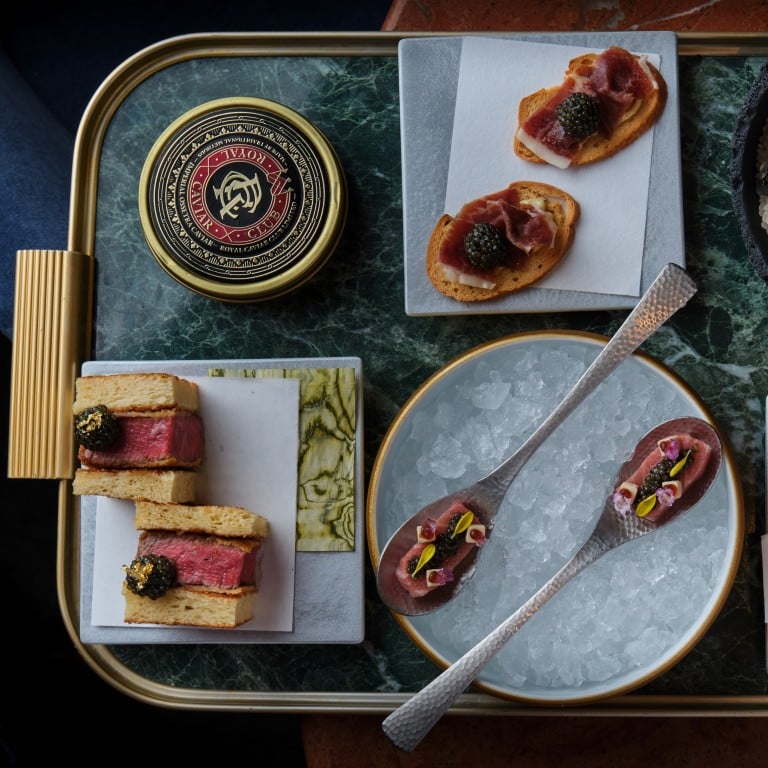Has caviar gone from luxurious to mainstream? How 4 Hong Kong chefs – and 1 Instagram foodie – use ‘black gold’ in unexpected ways, from Whey’s Barry Quek to Mono’s Ricardo Chaneton

- Oscietre, baerii, cristal – different types of the sturgeon roe are sourced from Russia’s Amur River or more sustainably farmed in Zhejiang, China and elsewhere
- Michelle Yu, known as @munching_dentist on Instagram, loves a dish from Hong Kong’s Caprice, the brainchild of Guillaume Galliot, that pairs it with asparagus
And then there is caviar – the ingredient they call black gold, whose presence was once revered. In reality, sturgeon roe is now an expensive add-on at all-you-can-eat champagne brunches or retailed in one- or two-kilo stackable tins to be dolloped atop whatever’s on the dinner table that evening.

We spoke to four Hong Kong chefs – and one foodie whose fondness for caviar sees her fridge constantly stocked with Oscietra – about how they help caviar to shine on their menus.
1. Chef Sato Kiyoshi, Artifact

Chef Sato Kiyoshi, who designed the caviar-led menu at Artifact, the chef’s table-slash-speakeasy at upscale food court Basehall02, uses three different caviars in his degustation menu: “Superior, which has a large egg, great texture and a light flavour, which allows us to use greater quantities on the said dish without overpowering. Oscietra: beautiful eggs, a great complexity of flavour and richness, which can provide a bigger burst of umami. And premium baerii – baerii has acquired the stigma of a lower grade caviar, which is certainly not true. From the minimum age requirement of processing being longer than others, to the complexity and longer-lasting taste, it provides something many other caviars do not.”
Though nearly every dish on the menu features caviar, the chef feels his simple rice dish showcases the stuff best. “We use four types of eggs on our rice dish: superior caviar, soy-cured Japanese egg yolk, sake-marinated salmon eggs, and karasumi (cured mullet roe).”
2. Chef Ricardo Chaneton, Mono
